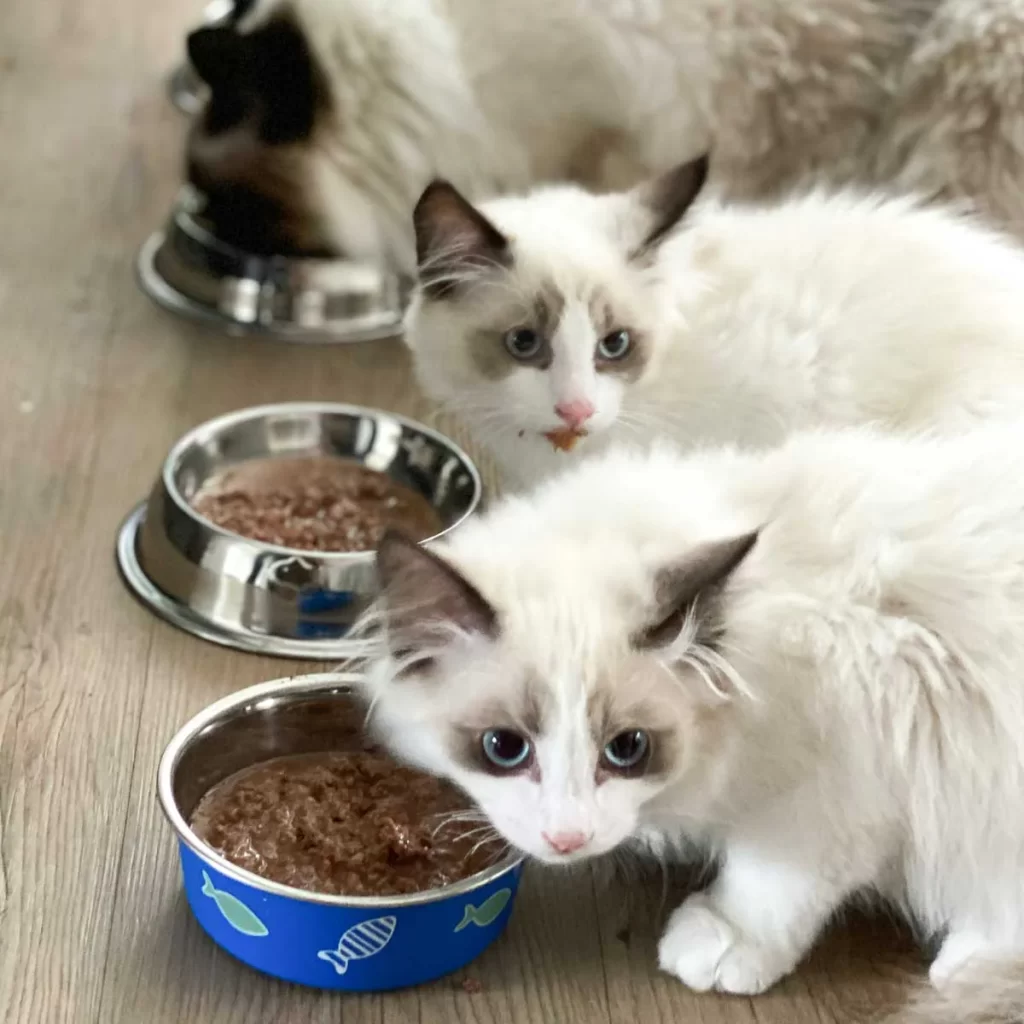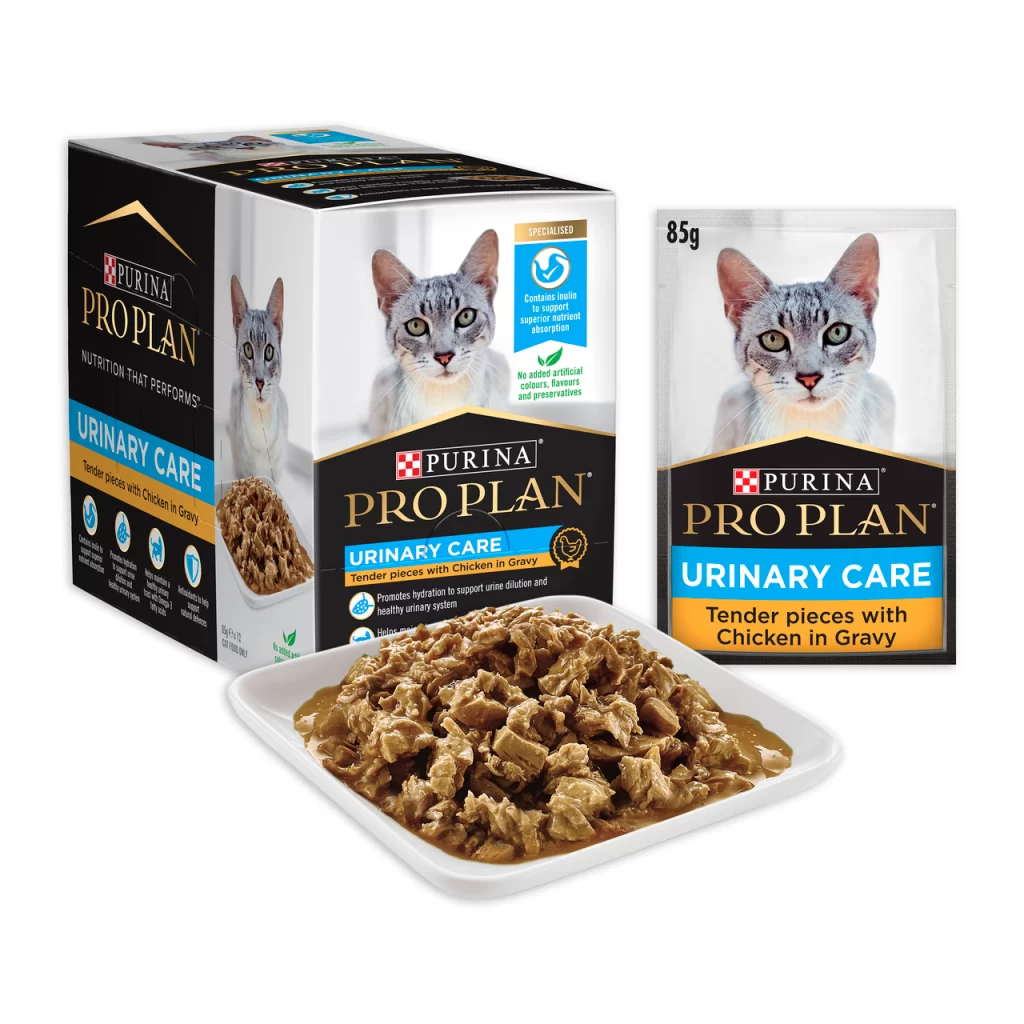Feeding your cat the right amount of wet food is crucial for their overall health and well-being. While it’s tempting to give your furry friend as much as they want, it’s important to establish a balanced diet to prevent obesity and other health issues.
In This Article
- 1 Factors Affecting Food Intake
- 2 General Guidelines for Feeding Wet Food
- 3 Tips for Feeding Your Cat Wet Food
- 4 Storing and serving wet food
- 5 Consulting Your Veterinarian
- 6 Consulting with a veterinarian for personalized feeding recommendations
- 7 Common Mistakes to Avoid
- 8 Addressing common feeding concerns
Factors Affecting Food Intake
Several factors influence how much wet food your cat needs. These include:
- Age: Kittens, adult cats, and senior cats have different nutritional requirements.
- Activity Level: More active cats will need more calories than less active ones.
- Health Conditions: Cats with certain health issues, such as kidney disease or diabetes, may require specific dietary adjustments.
- Body Condition: Your vet can assess your cat’s body condition and recommend the appropriate amount of food.
General Guidelines for Feeding Wet Food
While specific needs vary, here are some general guidelines to help you determine the right amount of wet food for your cat:
- Read the Food Label: Carefully read the instructions on the wet food can or pouch. Most brands provide feeding guidelines based on your cat’s weight.
- Start with a Small Amount: Begin by feeding your cat slightly less than the recommended amount. This will help you avoid overfeeding and monitor their weight.
- Monitor Your Cat’s Weight: Use a body condition scoring chart to assess your cat’s weight regularly. If they gain weight, reduce the amount of food. If they lose weight, increase it.
- Consider Your Cat’s Preferences: Some cats prefer to eat smaller meals more frequently, while others may do well with larger meals.

Tips for Feeding Your Cat Wet Food
- Fresh Water: Always provide fresh, clean water.
- Meal Times: Establish a regular feeding schedule to help regulate your cat’s digestion.
- Food Temperature: Serve wet food at room temperature.
- Clean Bowls: Wash and dry your cat’s food and water bowls daily to prevent bacterial growth.
Storing and serving wet food
Once you’ve opened a can or pouch of wet cat food, it’s important to store it properly to maintain its freshness and safety. Here’s how:
- Refrigerate: Transfer any unused portion to an airtight container and refrigerate it. This will prevent bacterial growth and keep the food fresh.
- Use Within a Few Days: While refrigeration can extend the shelf life, it’s best to use the leftover food within 2-3 days.
- Avoid Freezing: Freezing wet cat food can alter its texture and flavor. While it’s technically possible, it’s generally not recommended.
Serving Wet Cat Food
When it’s time to serve your cat’s wet food, keep these tips in mind:
- Room Temperature: Allow the food to reach room temperature before serving. Cold food can be less appealing to cats.
- Fresh Water: Always provide fresh, clean water alongside the meal.
- Clean Bowls: Wash and dry your cat’s food and water bowls daily to prevent bacterial growth.
- Portion Control: Follow the feeding guidelines on the food package. Overfeeding can lead to obesity and other health problems.
- Meal Times: Establish a regular feeding schedule to help regulate your cat’s digestion.
By following these guidelines, you can ensure that your cat receives the proper nutrition and enjoys their meals.
Consulting Your Veterinarian
If you’re unsure about how much wet food to feed your cat, consult your veterinarian. They can provide personalized advice based on your cat’s specific needs. They can also help you determine if your cat needs any supplements or special dietary considerations.

Consulting with a veterinarian for personalized feeding recommendations
What to Expect During a Veterinary Consultation
When you consult your veterinarian about your cat’s diet, be prepared to discuss the following:
- Your cat’s current diet: What brand and type of food are you feeding? How much are you feeding?
- Your cat’s behavior and activity level: Is your cat active or sedentary? Does it have any behavioral changes?
- Your cat’s weight and body condition: Your vet will assess your cat’s weight and body condition to determine if any adjustments are needed.
- Any health concerns or specific dietary needs: If your cat has any health issues, let your vet know.
Your Veterinarian Can Provide the Following:
- Personalized Feeding Recommendations: Your vet can recommend a specific brand, type, and amount of food that is tailored to your cat’s needs.
- Dietary Restrictions: If your cat has food allergies or sensitivities, your vet can recommend a suitable diet.
- Weight Management Tips: If your cat is overweight or underweight, your vet can provide advice on how to adjust their diet and exercise routine.
- Supplemental Needs: In some cases, your vet may recommend supplements to address specific nutritional deficiencies.
Remember:
- Avoid Self-Diagnosis: Don’t try to diagnose your cat’s dietary needs on your own.
- Regular Check-ups: Schedule regular veterinary check-ups to monitor your cat’s health and adjust their diet as needed.
- Trust Your Vet’s Advice: Your veterinarian is the expert. Follow their recommendations to ensure your cat’s optimal health.
By consulting with a veterinarian, you can provide your cat with the best possible nutrition and help them live a long, healthy life.
Common Mistakes to Avoid
- Free Feeding: Avoid leaving food out all day. This can lead to overeating and obesity.
- Ignoring Food Labels: Always read the feeding instructions on the food label.
- Neglecting Your Cat’s Weight: Regularly monitor your cat’s weight and adjust their food intake as needed.
Addressing common feeding concerns
Every cat is unique, and their dietary requirements can vary. While the general guidelines provided earlier offer a solid foundation, it’s essential to address some common feeding concerns and tailor your cat’s diet accordingly.
Picky Eating
- Variety is Key: Offer different flavors and textures of wet and dry food to stimulate your cat’s appetite.
- Temperature Matters: Some cats prefer their food at room temperature or slightly warmed.
- Environmental Factors: Ensure a quiet and stress-free feeding environment.
- Consult Your Veterinarian: If pickiness persists, consult your vet to rule out underlying health issues.
Obesity
- Portion Control: Strictly adhere to the recommended serving sizes on the food label.
- Active Lifestyle: Encourage playtime and interactive toys to burn excess energy.
- Low-Calorie Diet: Consider consulting your vet about a low-calorie diet or weight-management formula.
- Regular Check-ups: Schedule regular vet visits to monitor your cat’s weight and overall health.
Food Allergies and Sensitivities
- Identify Triggers: Keep a food diary to track potential allergens like grains, proteins, or additives.
- Consult Your Vet: A veterinarian can recommend hypoallergenic or limited-ingredient diets.
- Gradual Transition: If switching diets, introduce the new food gradually to minimize digestive upset.
Senior Cat Nutrition
- Calorie Control: As cats age, their activity levels may decrease, so reduce calorie intake to prevent weight gain.
- Joint Health: Consider foods with glucosamine and chondroitin to support joint health.
- Kidney Function: Consult your vet about kidney-specific diets, especially for older cats.
Indoor Cats
- Enriched Diet: Provide a variety of foods to stimulate their senses.
- Regular Feeding Times: Establish a routine to prevent boredom and overeating.
- Interactive Feeding: Use puzzle feeders to encourage mental and physical activity.
Remember, Your Cat’s Health is in Your Hands
By addressing these common concerns and working closely with your veterinarian, you can ensure that your feline friend receives the optimal nutrition they need to thrive. A well-nourished cat is a happy cat, so make feeding time a positive experience for both of you.

By following these guidelines and consulting your veterinarian, you can ensure that your cat receives the right amount of wet food to maintain optimal health and well-being. Remember, every cat is unique, so it’s important to tailor your feeding approach to their individual needs.
